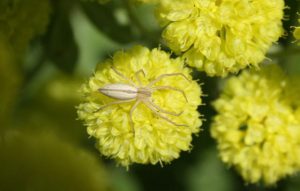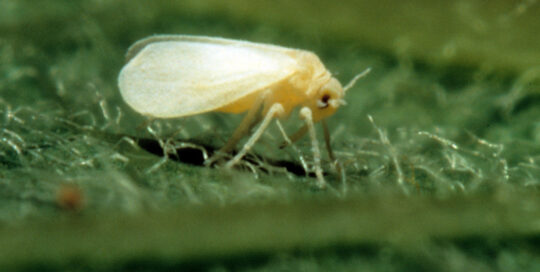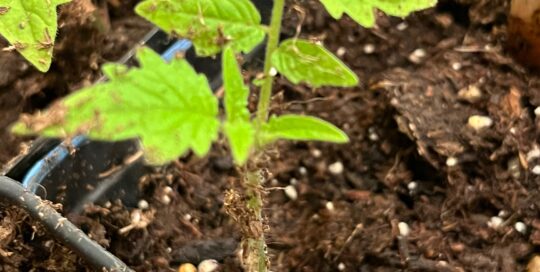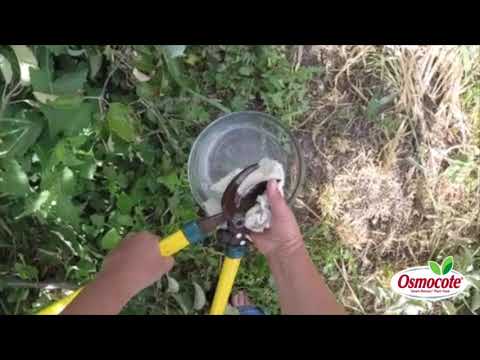Do crab spiders really eat bees and affect pollination rates?
Views: 8580

While many people recoil at the sight of any spider, when you take a few moments to watch them, they’re pretty fascinating… as long as they’re not too big and hairy. For years, we’ve watched the impressive orb weavers in the garden, particularly in the fall, construct elaborate webs within the large plants to capture flies and other prey. Watching yellow jackets wrapped up in their web was always particularly satisfying since they are consistently bothersome in the raspberries and apples.
But what about the other spiders in the garden? I still need to identify the spider on the buckwheat flower in the photo that I took while visiting Tizer Gardens in Jefferson City, Montana. I couldn’t resist just because it was so pretty. (Of course, I loved the buckwheat, too, which is a variety from Plant Select. It does extremely well without any babying, even in the very difficult conditions at Tizer.)
Crab Spiders
This pretty yellow spider in the picture still needs to be named. However, there’s another common, usually yellow, spider frequently found on the flowers. The goldenrod crab spider is the kind of squat arachnid perched on the center of flowers waiting to grab a fly or bee. The fascinating feature of these crab spiders is they will change color to match their flower. Sam, my eldest who is intrigued by these creepy crawlies, brought one in this spring. It was neat to see it change from a brilliant yellow to almost white as the flower lightened.
Crab spiders hang out right in the center of the blossom blending in and appearing to be part of the plant. Their goal is to jump and attack whatever lands within their grasp. They have to be good since the insects flying into their reach have equally sharp eyesight and will pick up on discrepancies in flower appearance.
The drawback with the crab spiders is they will eat valuable pollinators as much as they’ll eat anything else. They don’t discriminate. Many of the bees, both solitary and honeybees, have sharp enough senses to detect if something is amiss. There have been studies indicating that they only fall for the ruse if the reflection of UV light off of the bee fits the flower. There’s also a concern that pollination rates drop in the presence of crab spiders. Although, the studies reflect that it depends on the flowers and the numbers of spiders.
Because they will eat beneficial pollinators, I’ve actually seen advertisements for companies to spray your garden to eliminate them. Please don’t do this. In the big picture, crab spiders are far more useful than they are harmful. They make up the overall balance in the garden. And don’t forget, crab spiders are food for other species such as lizards, birds, and shrews, which all help keep pests in check. Enjoy these colorful and clever little spiders. They are certainly beautiful to watch, and beyond possibly snacking on an occasional bee, they are great little garden helpers.
Meet Amy Grisak
Amy is a freelance author and photographer in Great Falls, MT who specializes in gardening, foods, and sustainable agriculture. She provides information on every kind…
Amy's Recent Posts

Watch Out for Silverleaf Whiteflies








